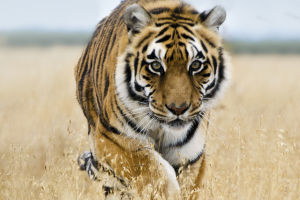In the vast savannas of Africa, a unique animal is renowned for its striking black and white stripes and graceful demeanor.
This animal is the zebra, one of the most iconic and charismatic creatures of the savanna. Zebras are not only marvels of nature but also integral parts of their ecosystems.
In this article, we will delve into five aspects of zebras: their physical characteristics, habitat and distribution, behavior, social structure, and their relationship with humans.
1. Physical Characteristics:
Zebras are renowned for their unique black and white striped coats. These stripes serve not only as beautiful adornments but also as crucial elements for their survival.
The black and white stripes help zebras camouflage in the grasslands, making them less visible to predators, and also aid in identifying individuals within the herd. Additionally, zebras possess distinctive body structures, with slender necks and legs, that showcase extraordinary speed and agility when running.
2. Habitat and Distribution:
Zebras primarily inhabit grasslands, savannas, and open plains across Africa.
Their distribution range includes countries in Southeast, Southern, and Central Africa, such as Kenya, Tanzania, and South Africa, among others. Zebras prefer open environments, which provide ample food and water sources while also making it easier for them to detect potential threats.
3. Behavior:
Zebras are social animals, typically living together in large herds. They often form vast migratory groups for foraging and migration.
During these movements, zebras maintain close connections to coordinate actions against potential threats. They present an elegant and powerful sight as they swiftly navigate through the savanna grassland.
4. Social Structure:
Zebras live within relatively complex social structures, usually led by a dominant male.
Within the group, other members assume different ranks and roles based on age and gender. Social bonds among zebras are strong, as they care for and protect each other, especially the young, and collectively confront external threats. When facing predators, zebra herds exhibit collective behavior to increase their chances of survival.
5. Relationship with Humans:
Zebras hold significant symbolic importance in African cultures, often regarded as symbols of natural wonder and beauty.
However, due to human activities and habitat destruction, wild zebras face serious threats. Illegal hunting, habitat loss, and climate change pose significant challenges to zebra survival. Therefore, conserving the habitat of wild zebras and promoting harmonious coexistence between humans and zebras become pressing issues for contemporary society.
Conclusion:
Wild zebras are renowned for their unique physical characteristics, behaviors, and social structures. Protecting zebras and their habitats is not only a responsibility to the natural ecosystem but also to human civilization.
By deeply understanding and respecting wild zebras, we can better coexist with nature and collectively create a brighter future.


